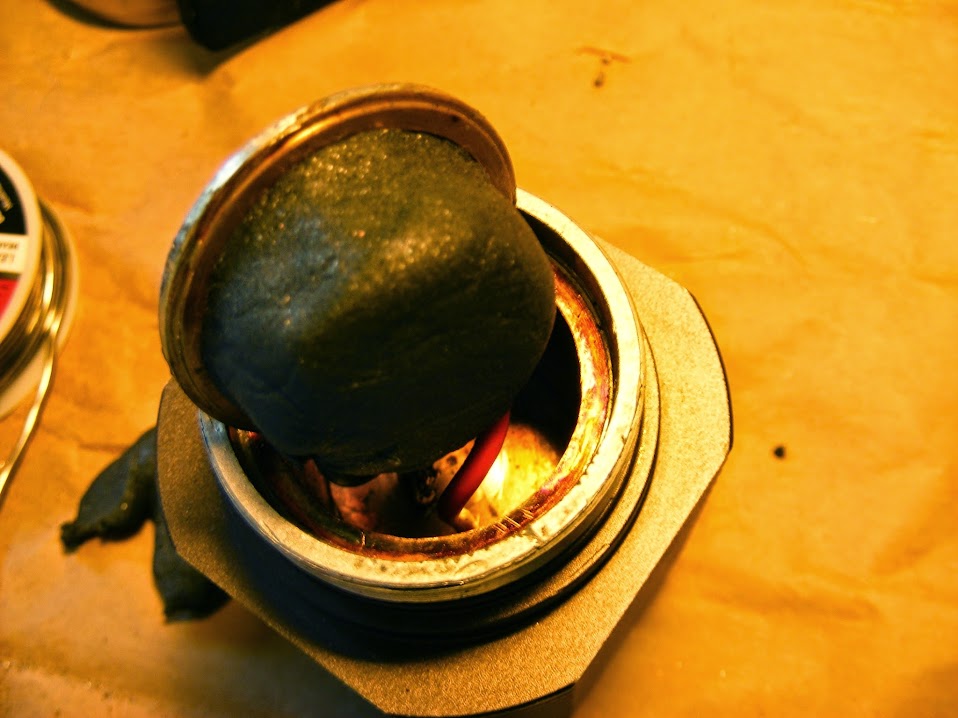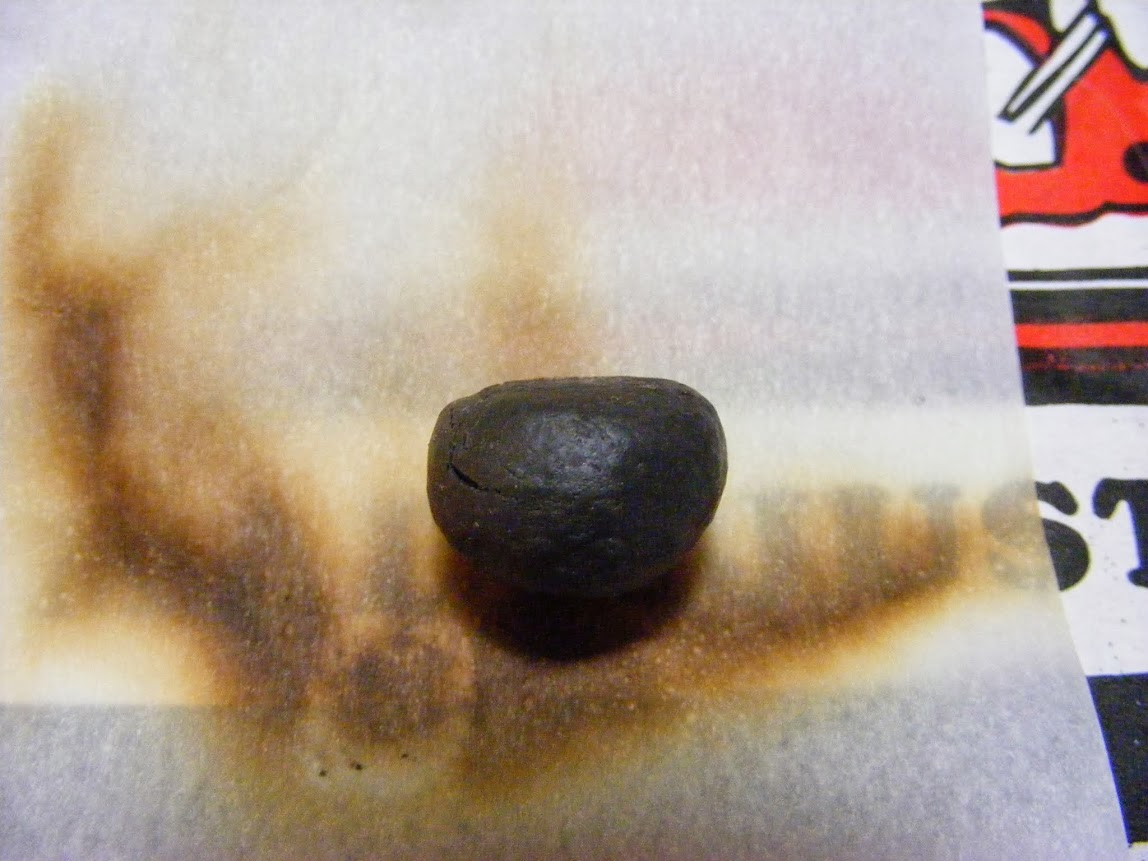- Joined
- Nov 28, 2013
- Messages
- 123
- Points
- 18
Sorry guys. I can't seem to get the pictures to shrink.


Here are 2 DIY potting recipes. They have not been tested for safety or effectiveness, but they should be quite effective. The first one seems to be doing its job in a couple high power flashlights I have built. One driving an MT-G2 at 11 amps with 3S KK ICR cells. They were created in search of a low cost way to reversibly pot my drivers. I have not tried the second recipe yest because the first one is so easy and fast with no curing time.
Very easy, clean, low cost, no wait recipe:
Ground Silicon Carbide (I think 400 Grit would work good)
Duct Seal
The Duct Seal has a flash point of 450F, but I figure if the temp in my light or laser gets anywhere near that high, I'm already having bigger problems.
Silicone Recipe (Haven't tried yet):
Ground Silicon Carbide
GE's Silicone II Caulk
GE Silicone II's are neutral cure silicone rubber compounds. Don't uses GE's Silicone I's as they are acid cure and bad for electronics.
Mix to desired consistency. For duct seal recipe, I like to mix as much silicon carbide in as I feel the it can take and still stick together. If I want it more pliable, I use less silicon carbide. For removal of the first recipe, pull off what you can by hand and then use an alcohol soaked Q-tip (cotton swab) to clean off the residue and potting stuck in hard to reach places.
Here are some very unscientific and some what inconclusive torture tests of the first recipe. Here is a product package picture of the binding ingredient.

It seems like clay. In my experience, clay tends to "melt" and run even at moderate temperatures, let alone at a couple hundred degrees Fahrenheit. Before I talk about heat, I need to say that this stuff is amazing to work with. Like clay, it's pliable yet holds shape. It's very easy to form over a driver components and into a pill.

First, I subjected to heat up to about 450 degrees for about 5 minutes, but took plenty of time getting it up to that temp. Probably about 15 to 20 minutes. Surprisingly, it didn't get runny. It did deform, but not anything like I expected.

Early in test, a few hundred degrees in to the test, and after test (flipped over). You can see the place it sat on the parchment paper during the test. It was just as pliable after the test. Didn't feel any different.
I decide to do another test to see if it would heat and cool faster with silicon carbide mixed in. I made 2 patties. One, pure duct seal. The other, I mixed in as much silicon carbide as I could before the stuff seemed to be getting to a point it would not hold together. I then subjected to heat again, but this time I threw it on a pre-heated hot plate (around 400 degrees). I tried to test to see which one heated up faster and which one cooled off faster. Sometimes the pure duct seal changed faster. Sometimes, the silicon carbide mix changed faster. No pattern emerged. Maybe this stuff has a lot of fine sand in it and conducts heat well on its own. The patties were too small for an effective test. The big news is that the silicone carbide mix did not appear to change shape at all.
Silcon Carbide mix on the right. Both were the same shape before the test started.

If anyone has their own recipe, please feel to share here.

Here are 2 DIY potting recipes. They have not been tested for safety or effectiveness, but they should be quite effective. The first one seems to be doing its job in a couple high power flashlights I have built. One driving an MT-G2 at 11 amps with 3S KK ICR cells. They were created in search of a low cost way to reversibly pot my drivers. I have not tried the second recipe yest because the first one is so easy and fast with no curing time.
Very easy, clean, low cost, no wait recipe:
Ground Silicon Carbide (I think 400 Grit would work good)
Duct Seal
The Duct Seal has a flash point of 450F, but I figure if the temp in my light or laser gets anywhere near that high, I'm already having bigger problems.
Silicone Recipe (Haven't tried yet):
Ground Silicon Carbide
GE's Silicone II Caulk
GE Silicone II's are neutral cure silicone rubber compounds. Don't uses GE's Silicone I's as they are acid cure and bad for electronics.
Mix to desired consistency. For duct seal recipe, I like to mix as much silicon carbide in as I feel the it can take and still stick together. If I want it more pliable, I use less silicon carbide. For removal of the first recipe, pull off what you can by hand and then use an alcohol soaked Q-tip (cotton swab) to clean off the residue and potting stuck in hard to reach places.
Here are some very unscientific and some what inconclusive torture tests of the first recipe. Here is a product package picture of the binding ingredient.
It seems like clay. In my experience, clay tends to "melt" and run even at moderate temperatures, let alone at a couple hundred degrees Fahrenheit. Before I talk about heat, I need to say that this stuff is amazing to work with. Like clay, it's pliable yet holds shape. It's very easy to form over a driver components and into a pill.
First, I subjected to heat up to about 450 degrees for about 5 minutes, but took plenty of time getting it up to that temp. Probably about 15 to 20 minutes. Surprisingly, it didn't get runny. It did deform, but not anything like I expected.
Early in test, a few hundred degrees in to the test, and after test (flipped over). You can see the place it sat on the parchment paper during the test. It was just as pliable after the test. Didn't feel any different.
I decide to do another test to see if it would heat and cool faster with silicon carbide mixed in. I made 2 patties. One, pure duct seal. The other, I mixed in as much silicon carbide as I could before the stuff seemed to be getting to a point it would not hold together. I then subjected to heat again, but this time I threw it on a pre-heated hot plate (around 400 degrees). I tried to test to see which one heated up faster and which one cooled off faster. Sometimes the pure duct seal changed faster. Sometimes, the silicon carbide mix changed faster. No pattern emerged. Maybe this stuff has a lot of fine sand in it and conducts heat well on its own. The patties were too small for an effective test. The big news is that the silicone carbide mix did not appear to change shape at all.
Silcon Carbide mix on the right. Both were the same shape before the test started.
If anyone has their own recipe, please feel to share here.
Last edited:





